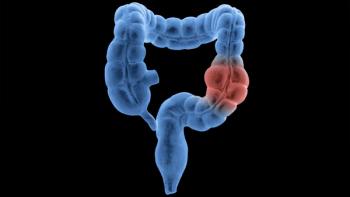
FDA Approves Magnetic System for Lymph Node Biopsy During Mastectomy
The FDA has approved the Magtrace and Sentimag Magnetic Localization System to identify and remove sentinel lymph nodes in women undergoing mastectomy for breast cancer.
The FDA has approved the Magtrace and Sentimag Magnetic Localization System to identify and remove sentinel lymph nodes in women undergoing mastectomy for breast cancer.
The magnetic Magtrace particles are injected into the patient’s breast tissue and become trapped in the lymph nodes. The surgeon then applies the Sentimag probe to the patients’ skin near the tumor site, and detects the magnetic particles located within the sentinel lymph node. That node is then removed and tested for the presence of cancer cells.
The system’s manufacturer, Endomag, says the device is less invasive than wire-guided localization and allows greater flexibility in scheduling for patients, surgeons, and radiologists.
“Sentinel lymph node biopsies are crucial for determining whether a patient’s breast cancer has spread and helping the provider determine the most appropriate course of treatment,” Binita Ashar, MD, director of the Division of Surgical Devices in the FDA’s Center for Devices and Radiological Health, said in a statement.
“Currently, a sentinel lymph node biopsy is performed after injection of radioactive materials and/or blue dye,” she added. “This magnetic system we’re approving today will offer patients undergoing mastectomy an option for their sentinel lymph biopsy that does not require the injection of radioactive materials.”
Endomag submitted updated data from the SentimagIC trial (NCT02336737), a pivotal, prospective, open-label, multicenter, paired comparison study evaluating Magtrace versus a Technetium 99-labeled sulfur colloid radioisotope/isosulfan blue dye control. The primary endpoint was noninferiority for lymph node detection rate.
Efficacy results from SentimagIC were first presented at the 2016 San Antonio Breast Cancer Symposium.
A total of 160 women with clinically node-negative early-stage breast cancer enrolled at 6 sites in the United States from January 2015 to December 2015. The intent-to-treat cohort included 147 patients.
The majority of patients (37.8%) had stage II disease, 33.3% had stage I, and 27.4% had stage III disease. There were no patients with stage IV disease. The mean age was 61.1 years and 82.3% of the cohort was white. Nineteen percent of patients were premenopausal, 3.4% were perimenopausal, 77.6% were postmenopausal.
A total of 369 lymph nodes were detected, 348 by Magtrace compared with 345 for the control. The per node detection rate was 93.5% (95% CI, 91-96) for the control versus 94.3% (95% CI, 91.9-96.7) for Magtrace, a difference of 0.8% (95% one-sided lower confidence bound, —2.1%). The per patient detection rate was 98.6% (95% CI, 95.2-99.8) with Magtrace and 98% (95% CI, 94.2-99.6) for the control.
The overall per patient concordance rate was 98% (95% CI, 94.2-99.6). In patients with at least 1 metastatic node (n = 22), the detection rate was 95.5% (95% CI, 86.8-100) for both modalities.
Magtrace detected 22 nodes missed by control, while the control detected 19 nodes missed by Magtrace. However, investigators found that both modalities detected all malignant nodes and all discordant nodes were benign.
Investigators recorded 69 adverse events (AEs) in 56 of 147 (38.1%) patients. Nine (13%) of those AEs were considered serious, but investigators determined that 7 of those were not related to Magtrace. The cause of the other 2 serious AEs was undetermined.
Breast discoloration/hyperpigmentation (16.3%) and ecchymosis/bruising (6.8%) were the most common AEs. Patients who had mastectomy (29.3%) did not display discoloration at follow-up visits 6 to 22 days after surgery.
The FDA recommends against using the system in patients with a metal implant in the axilla or in the chest or who have iron overload disease. Sentimag is not indicated for patients with hypersensitivity to dextran compounds or iron oxide.
Endomag received FDA approval for Sentimag and the marker technology Magseed in 2016. Sentimag was approved in the European Union in 2011.
Reference
Food and Drug Administration. Summary of safety and effectiveness data (SSED). https://bit.ly/2OlpsP0. Published July 24, 2018. Accessed July 25, 2018.
Newsletter
Knowledge is power. Don’t miss the most recent breakthroughs in cancer care.

























































































